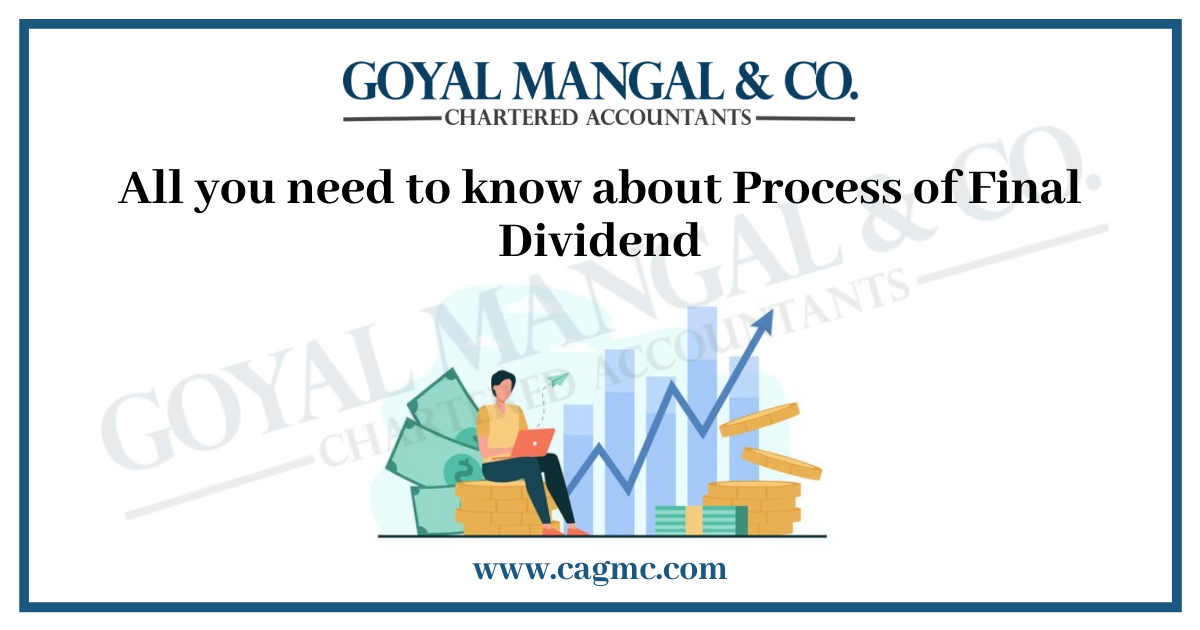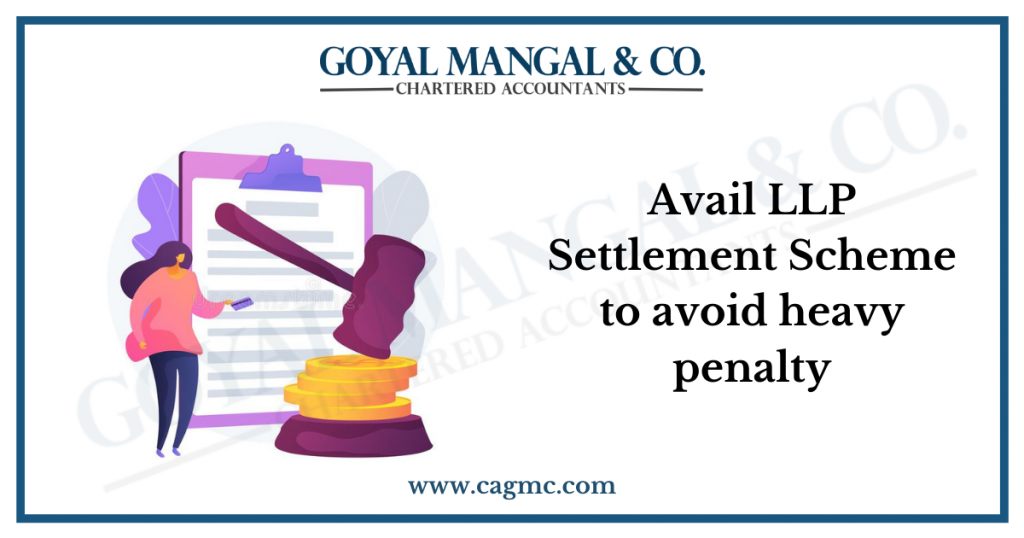Companies rely on funds to manage the affairs of their business successfully. Shareholders in a company play a vital role in raising funds, and in that process, they become its stakeholders. They exercise control over the share of profits in proportion to the money they invest. Dividend is known as the share of profit by shareholders. Shareholders are also considered the owners of the company; therefore, they are entitled to get a dividend.
| Table of contents |
What is Dividend?
According to Section 2(35) of the Companies Act, 2013, the term “Dividend” means the amount of profit not retained in the business and which has been distributed among the shareholders of the company in proportion to the amount of shares held by them. The definition of Dividend includes any Interim Dividend. For this purpose, capitalization of profit in the form of bonus shares is not considered as Dividend.
The Companies which are governed under Section 8 of Companies Act, 2013 are prohibited to pay any dividend to its members and hence the profits of such companies are applied in promotion of its objects.
Types of Dividend
- Cash Dividend- This is the most common type of payment of Dividend. In this, company pays the Dividend to its shareholders and such money is deposited in the Bank Account of all the shareholders.
- Stock Dividend- In this type of Dividend, Company issues new shares to the shareholders without any consideration.
- Property Dividend- The Company does not pay Dividend in the form of Cash or shares rather Company pays other assets like physical assets, real estate, etc. to its shareholders. This is not the common practice
- Scrip Dividend- When company pays the Dividend in the form of promisory note to pay the shareholders at a later date because the company does not have the funds to pay Dividend at this stage.
- Liquidating Dividend- When company intends to shut down its business, the Board of Directors shall return the capital invested by the shareholders then it is known as Liquidating Dividend.
Meaning of Final Dividend
Final Dividend is declared by the company at an Annual General Meeting (AGM) of the Company on the recommendation of the Board of Directors. Final Dividend is announced only after Financial Statements are prepared, finalized and audited by the Auditors. On the basis of the profitability of the company, the management shall decide the percentage of profit to be distributed among the shareholders. The dividend once declared becomes the obligation of the Company and hence cannot be revoked.
The Dividend which is declared and paid by the Board of Directors between two Annual General meeting is known as “Interim Dividend”. Interim Dividend is declared out of the surplus in profit and loss account or out of profits of such Financial Year in which Dividend is to be declared.
Advantages of declaring Final Dividend
Some of the advantages of declaring Final Dividend are:
- Percentage of Final Dividend is greater than Interim Dividend.
- Declaration of Final Dividend creates a confidence among the shareholders.
- The investors are eager to invest in such companies which declares Final Dividend.
- Certainty of Dividends is always preferred by the shareholders over higher capital gains.

Characteristics of Final Dividend
Some of the features of Final Dividend are as follows:
- Proportion of the profits paid to the shareholders of Company
- It is an unconditional payment
- Equity and Preference shareholders are eligible for payments
- Dividend can be declared out of profits and not out of capital
- It can be declared only on the recommendation of the Board of Directors
- Dividend shall be approved at an Annual General meeting by way of Ordinary Resolution
- Dividend once declared cannot be revoked
- It must be paid in cash and not in kind
- Dividend is paid only on the paid up value of shares
Sources of distribution of Final Dividend
Amount of Final Dividend shall be paid out of following sources:
- Out of profit– Dividend shall be paid out of Previous year profit or Current year profit of the Financial Year after carried over previous losses and depreciation are set off against the Current’s Year profit.
- Out of Reserves– A company may declare dividend out of reserves in the event of inadequate profits subject to following conditions:
-
- The rate of Dividend shall not exceed the average rate at which the dividend was declared in the immediately preceding three Financial Year.
- The amount to be withdrawn from such reserves shall not be more than 1/10th of paid-up share capital and free-reserves appearing in last audited Balance sheet.
- The remaining balance of such reserves after such withdrawal shall not be less than 15% of paid-up share capital appearing in last audited Balance sheet.
- The amount so withdrawn shall be first utilized in setting off losses of Financial Year in which Dividend is declared.
- Out of the money provided by Central or State Government– Dividend may also be paid out of the money provided by the Central or State Government in accordance with the guarantee given by the Government.
Difference between Interim Dividend and Final Dividend
| Interim Dividend | Final Dividend | |
| 1. | It can be declared by the Board of Directors only. | It is recommended by the Board of Directors and declared by the Shareholders. |
| 2. | It is declared during the Financial Year. | It is declared in the Annual General Meeting at the end of the Year. |
| 3. | It is declared before the preparation of final accounts. | It is declared after the preparation of final accounts. |
| 4. | Articles permit the declaration of payment of Interim Dividend. | No such provision is required in the Articles for payment of Final Dividend. |
| 5. | Interim Dividend is declared by passing Board Resolution. | Final Dividend is declared by passing Ordinary Resolution at the AGM. |
Procedure of declaration and payment of Dividend
- At least seven days’ notice shall be issued for convening Board meeting and in case of Listed Company notify stock exchange at least two working days before the meeting.
- Hold Board meeting and pass Board Resolution for recommending Final Dividend to the shareholders. In case of Listed company, it shall declare Dividend at least five days before fixing of record date.
- Notice of General meeting shall be given at least twenty-one clear days before the meeting.
- General meeting shall be convened and pass Ordinary Resolution for declaring Final Dividend to the shareholders as per the recommendation of Board.
- Within five days of declaration of Dividend, separate bank is required to be opened and amount of Dividend shall be credited to such Bank account.
- Dividend shall be paid within Thirty days of declaration of Final Dividend and if such Dividend is unclaimed or unpaid then such Dividend shall be transferred to an Unpaid Dividend account within seven days after expiration of Thirty days.
- If such Dividend remains unclaimed or unpaid for seven years, then such Dividend shall be transferred to Investor Education and protection fund.
Wrapping up
Paying Dividend always prove to be the motivating factor for the investors who have invested their money in the company. Issuing dividend is beneficial for Company and the shareholders both. Dividend payment depends upon the financial health and profitability of the company. Final Dividend is always more significant than Interim Dividend. This dividend is paid on a yearly basis and are generally higher than interim dividend.


